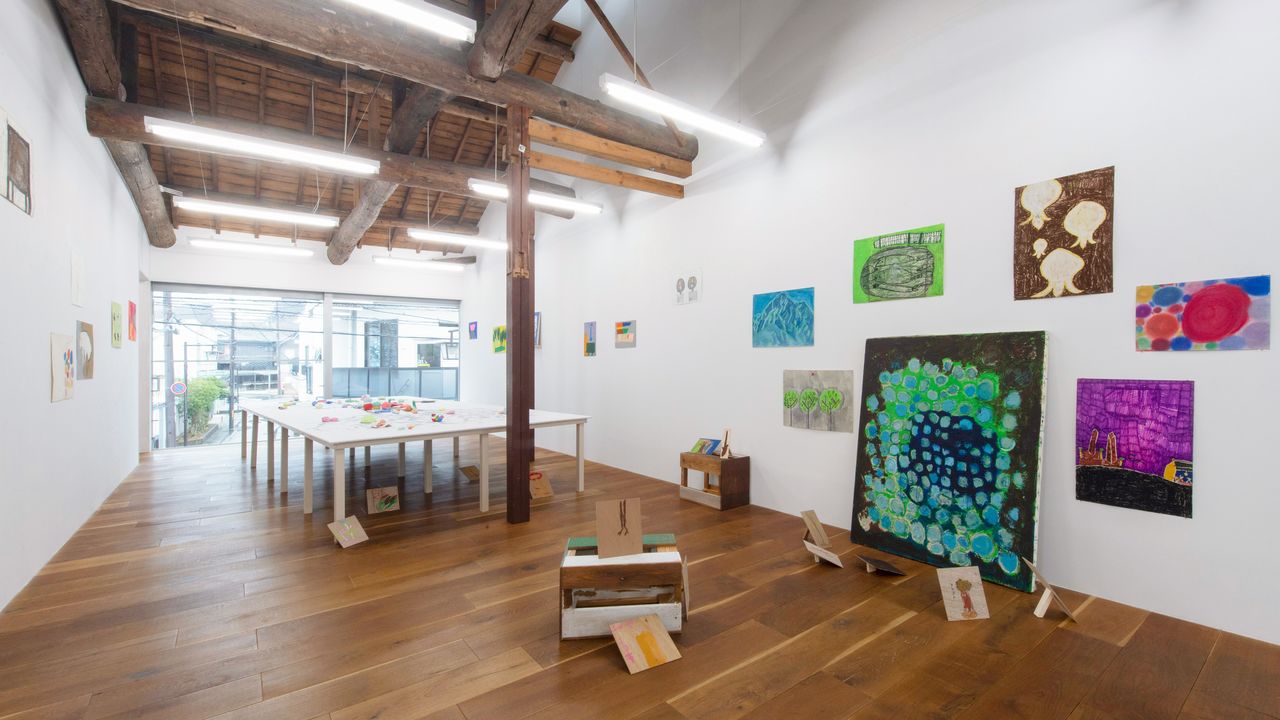
Addressing Social Issues Where Art and Welfare Meet
Transcending Space, Time, and Disability at the Mizunoki Museum of Art
Arts Society- English
- 日本語
- 简体字
- 繁體字
- Français
- Español
- العربية
- Русский
Children Displaying Unconventional Originality
What an unusual artwork! A huge piece of white cloth with an enormous tree painted in black ink, upon which sit innumerable colorful clay creations. A necklace-shaped piece is draped at the center of the tree trunk, two pink hearts are perched on branches, and beyond all that is a black object that resembles a car’s steering wheel.
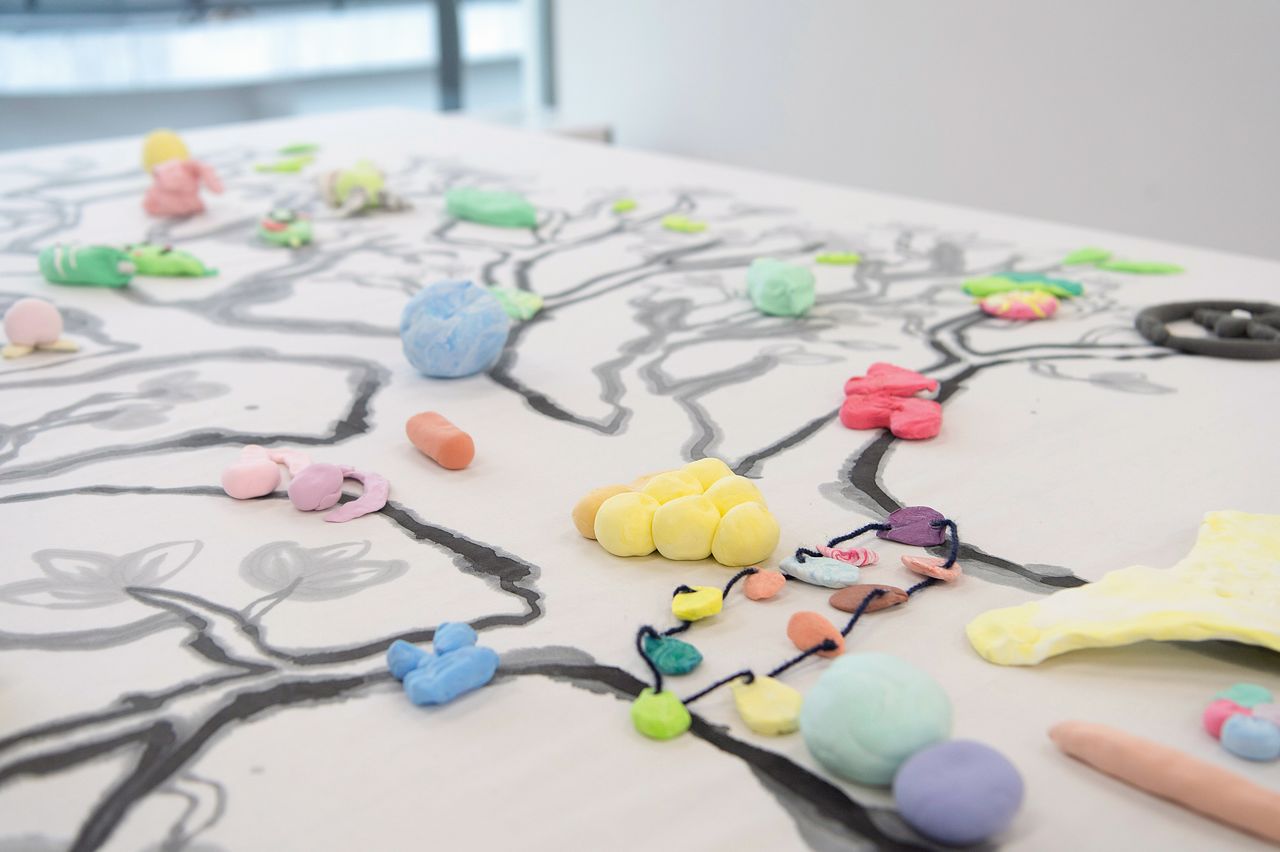
A large tree with various colorful clay creations positioned upon it. (Photo by Kuroiwa Masakazu; © 96Box)
The artwork was created by 47 students of Sakura-gakkyū, the special needs class at Kameoka Elementary School in Kameoka, Kyoto Prefecture, in collaboration with the contemporary artist Yamamoto Makiko. She painted the tree and presented it to the class, asking them “Does the tree have a heart? If so, what shape, and where might it be?”
Some children reacted by asking if there was any difference between the heart that feels and the physical heart. She gently explained to them that the heart helps the body to move, but it is also where we feel happiness and enjoyment. The students then made hearts using colored clay, explaining their ideas as they positioned their creations on the tree picture. “Because the tree is so big, I think it has a lot of hearts, so I made it like bunches of grapes.” “I think a heart is the same shape as a leaf, so I put it at the tip of the branches.”
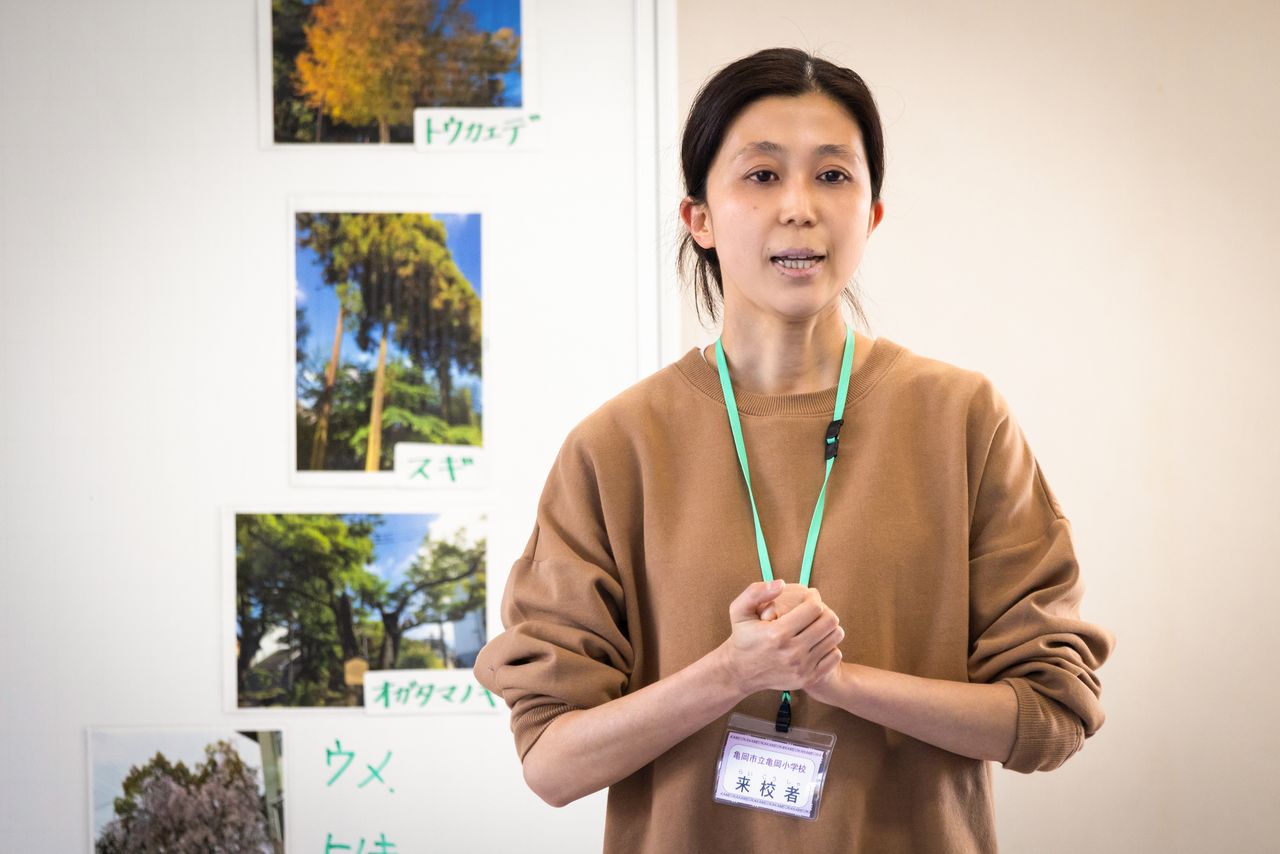
Yamamoto talking to the students of Sakura-gakkyū. (© Nippon.com)
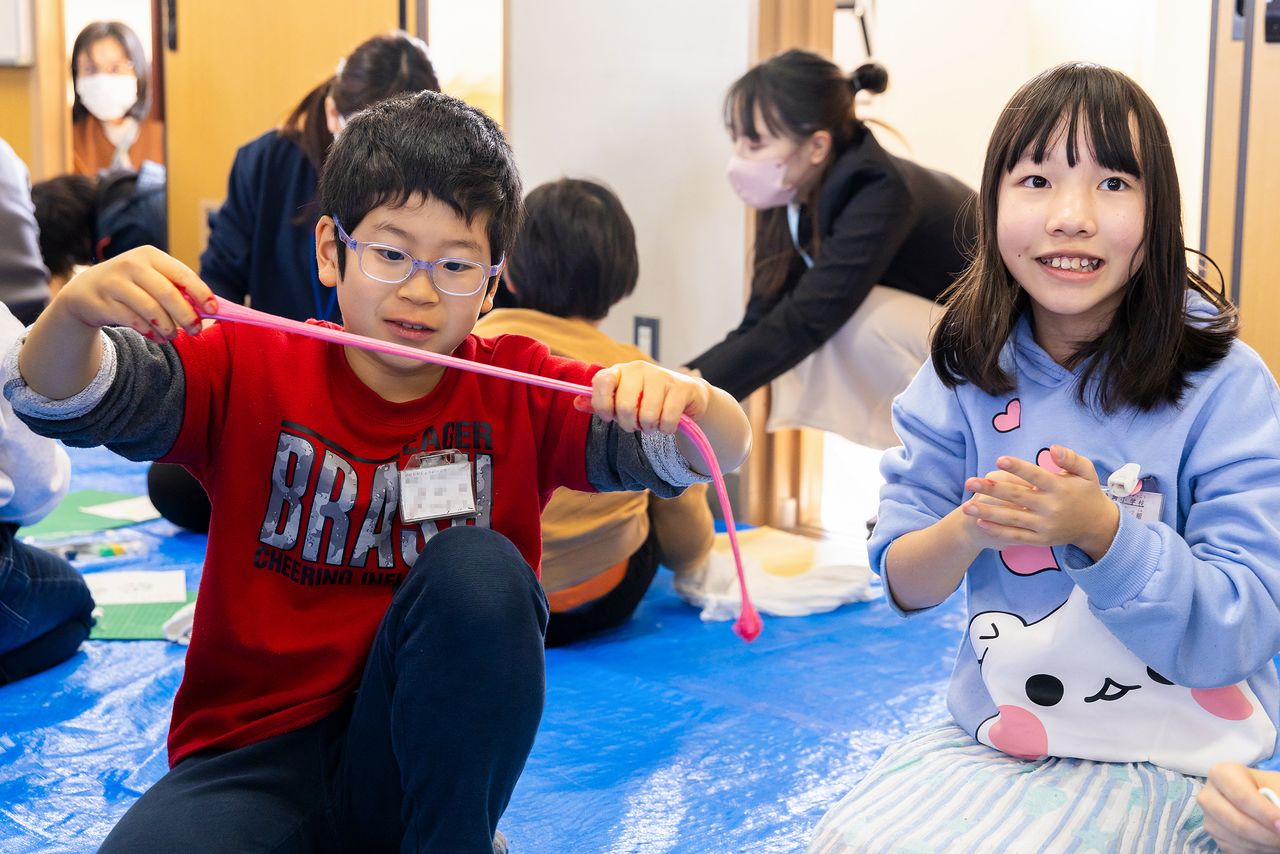
Students had fun mixing colors into the clay. (© Nippon.com)
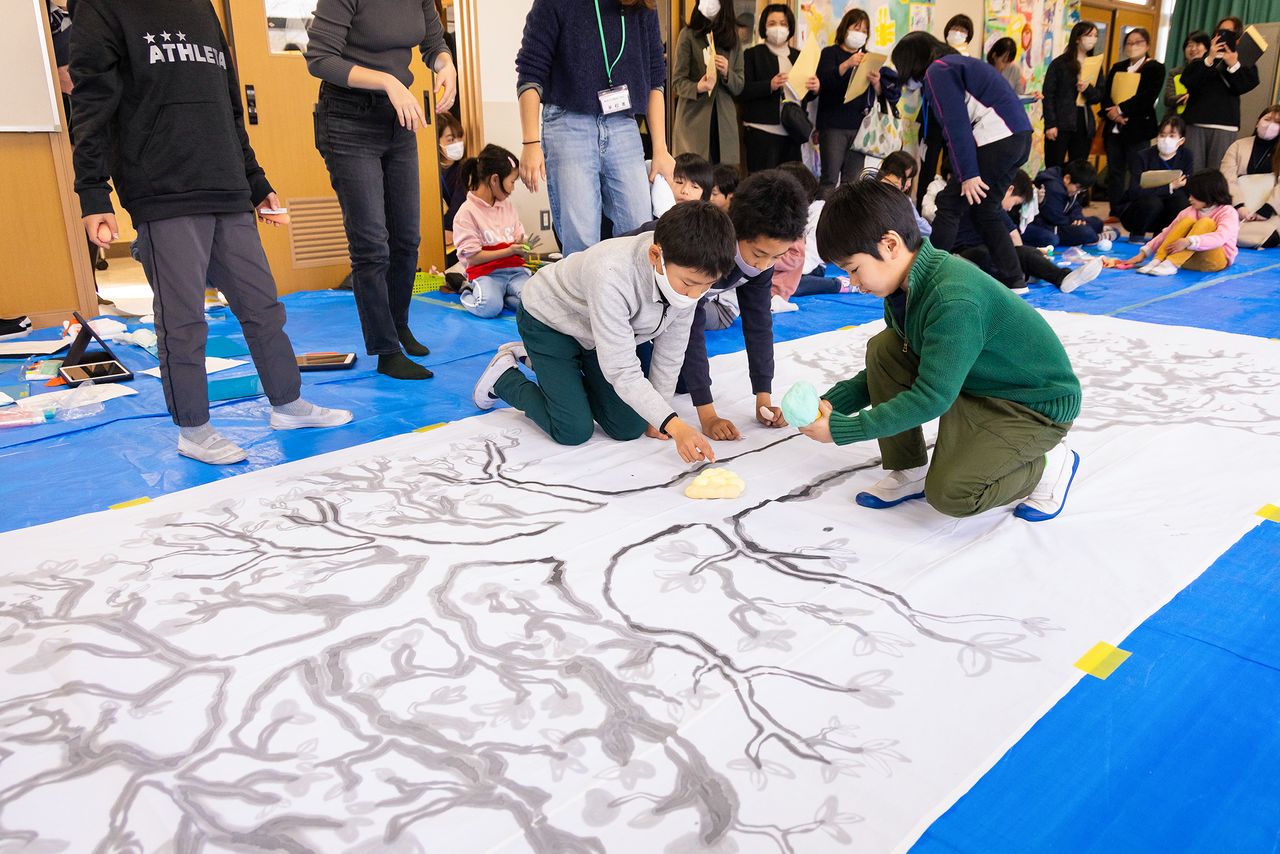
The students discussed with each other where to put their hearts. (© Nippon.com)
A Joint Museum-School Exhibition
This workshop was the brainchild of Mizunoki Museum of Art curator Okuyama Riko. Responding to a request from Kameoka Elementary School to make a curriculum incorporating art, Okuyama prepared six lessons and invited artists to take part.
She explains, “There is no right or wrong in art, no winning or losing. It’s a world where you are praised for being different. I hope that the students in Sakura-gakkyū can enjoy expanding their creativity without worrying about anything.”
She also planned a special exhibition displaying artworks made by the students in the classes with works from the Mizunoki Museum of Art’s collection. For the final class, the students were invited to the gallery to experience the joy of viewing the works in a display setting.
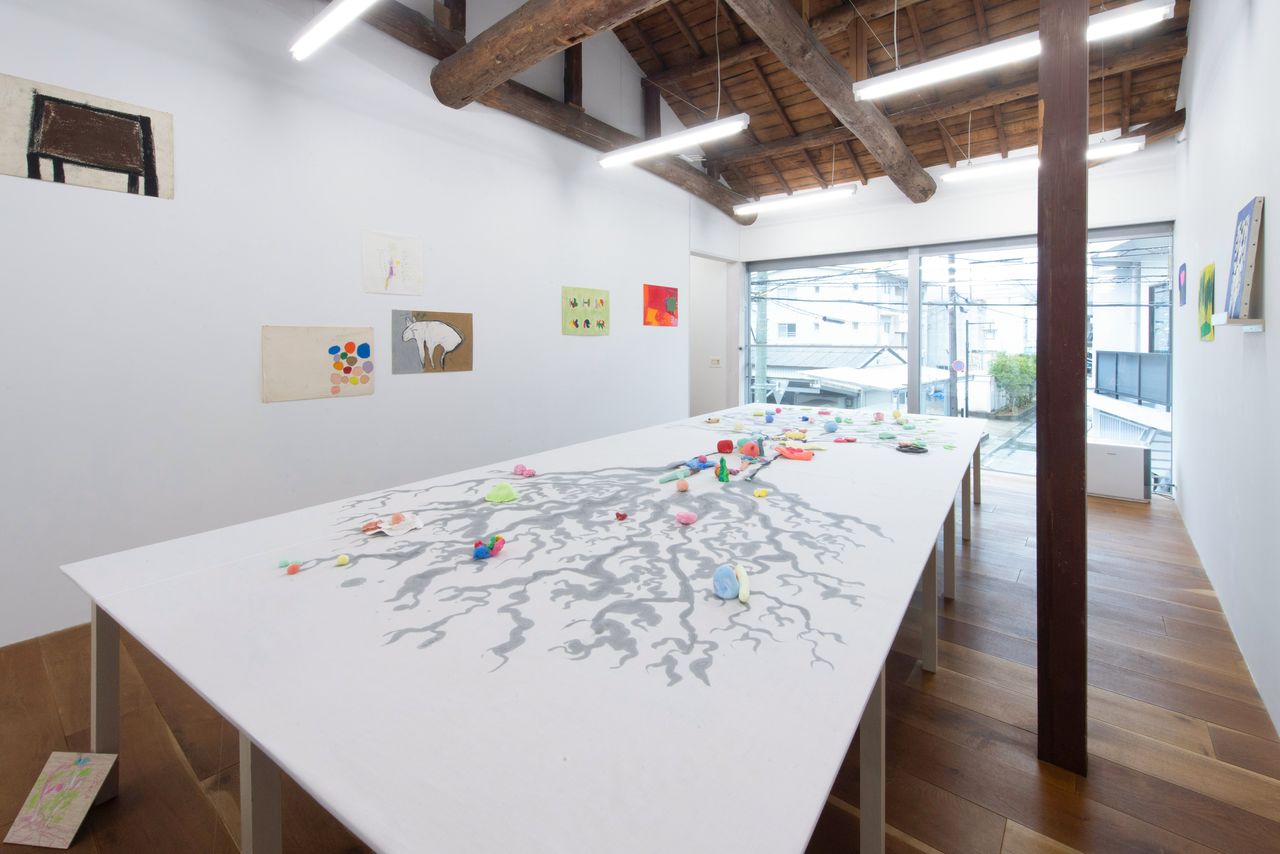
Tree Heart, displayed on the second floor at the Mizunoki Museum of Art. (Photo by Kuroiwa Masakazu; © 96Box)
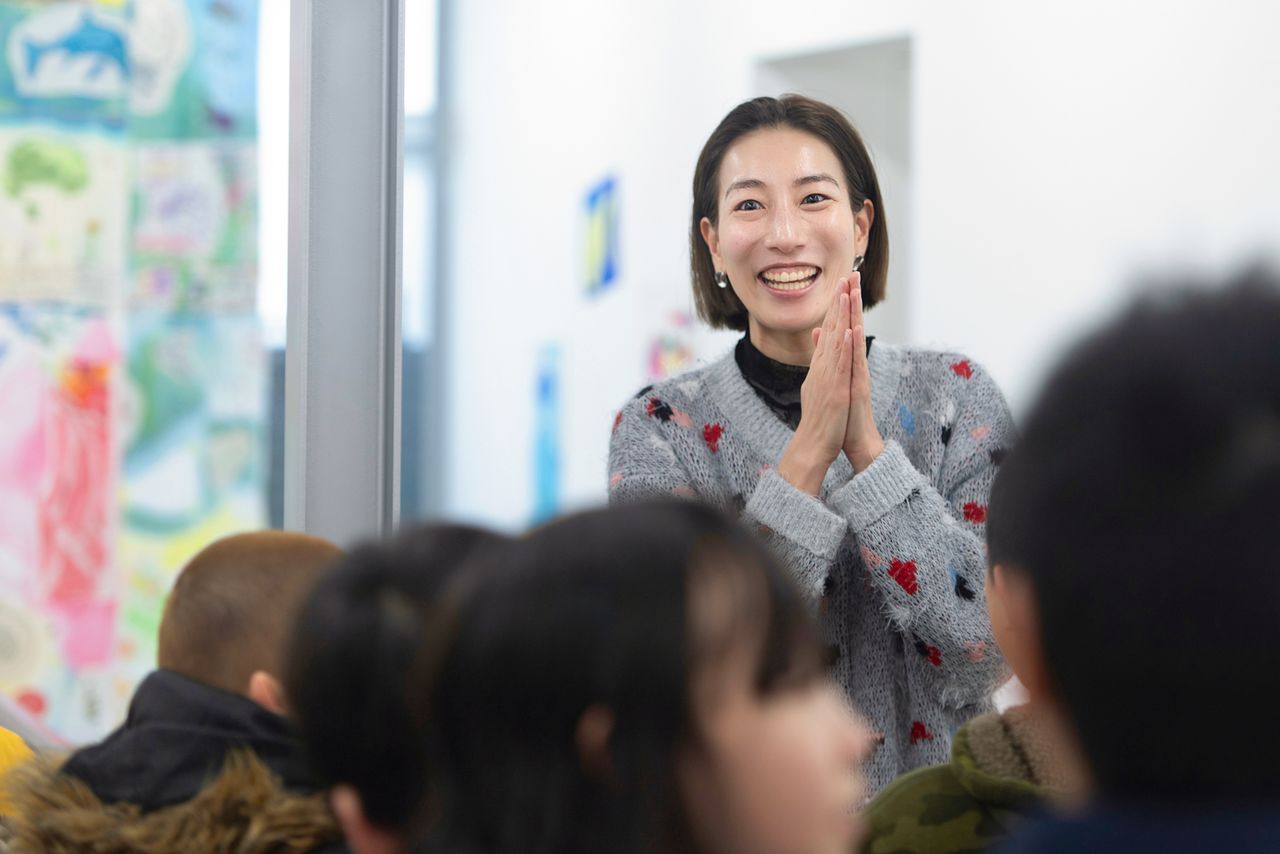
The children visited the gallery to learn from Okuyama about how art is exhibited. (Photo by Kuroiwa Masakazu; © 96Box)
The Children Visit the Exhibition
We were at the museum to witness the reactions of the children when they visited.
Upon entering, the first thing that strikes you are tapestry-like works suspended from the ceiling. These outstanding pieces are covered with pictures drawn by the children from the third workshop, assembled like a patchwork by the museum staff and Sakura-gakkyū teachers.
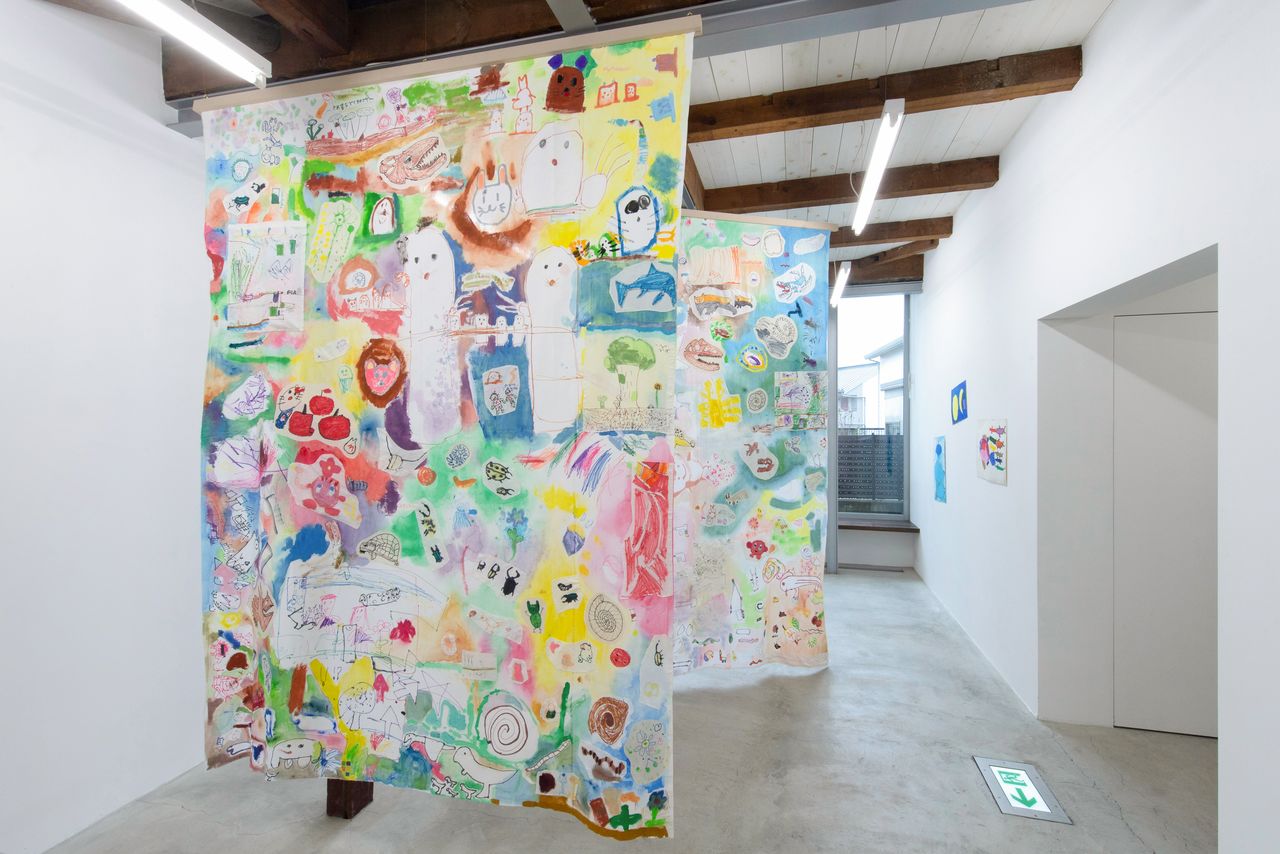
Two pieces on display at the rear of the ground floor at the Mizunoki Museum of Art. The individuality of the children shines out from their work. (Photo by Kuroiwa Masakazu; © 96Box)
For this piece, Yamamoto set the theme of “a creature that has been asleep underground since ancient times until now.” Viewed up close, you see a range of unique beings that artificial intelligence could never imagine: monsters and ghosts, an animal somewhere between a crocodile and a dinosaur, and a mysterious alien-like creature.
Upon seeing the finished works for the first time, the children were awestruck, crying out with excitement when they spotted their own pictures and those of their friends.
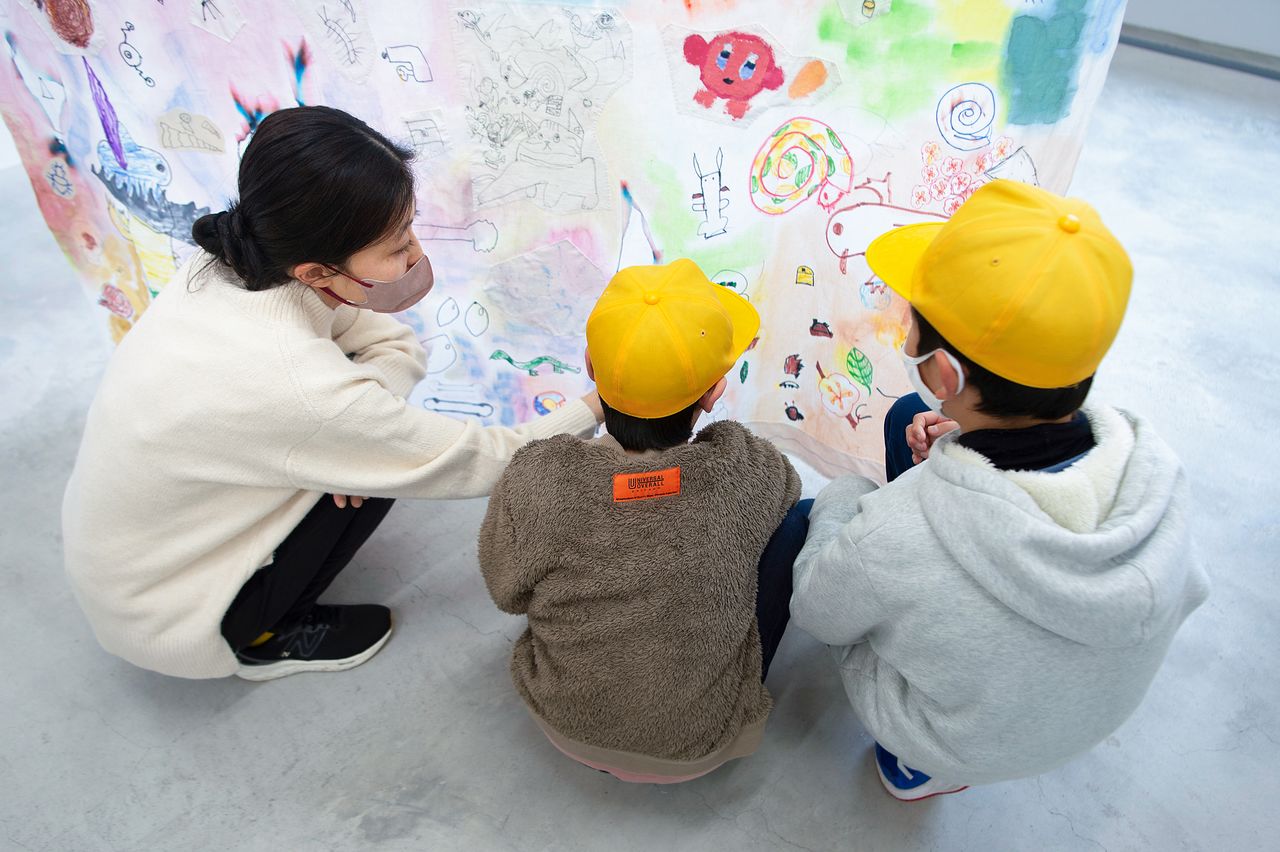
Students talk about their pictures with Yamamoto. (Photo by Kuroiwa Masakazu; © 96Box)
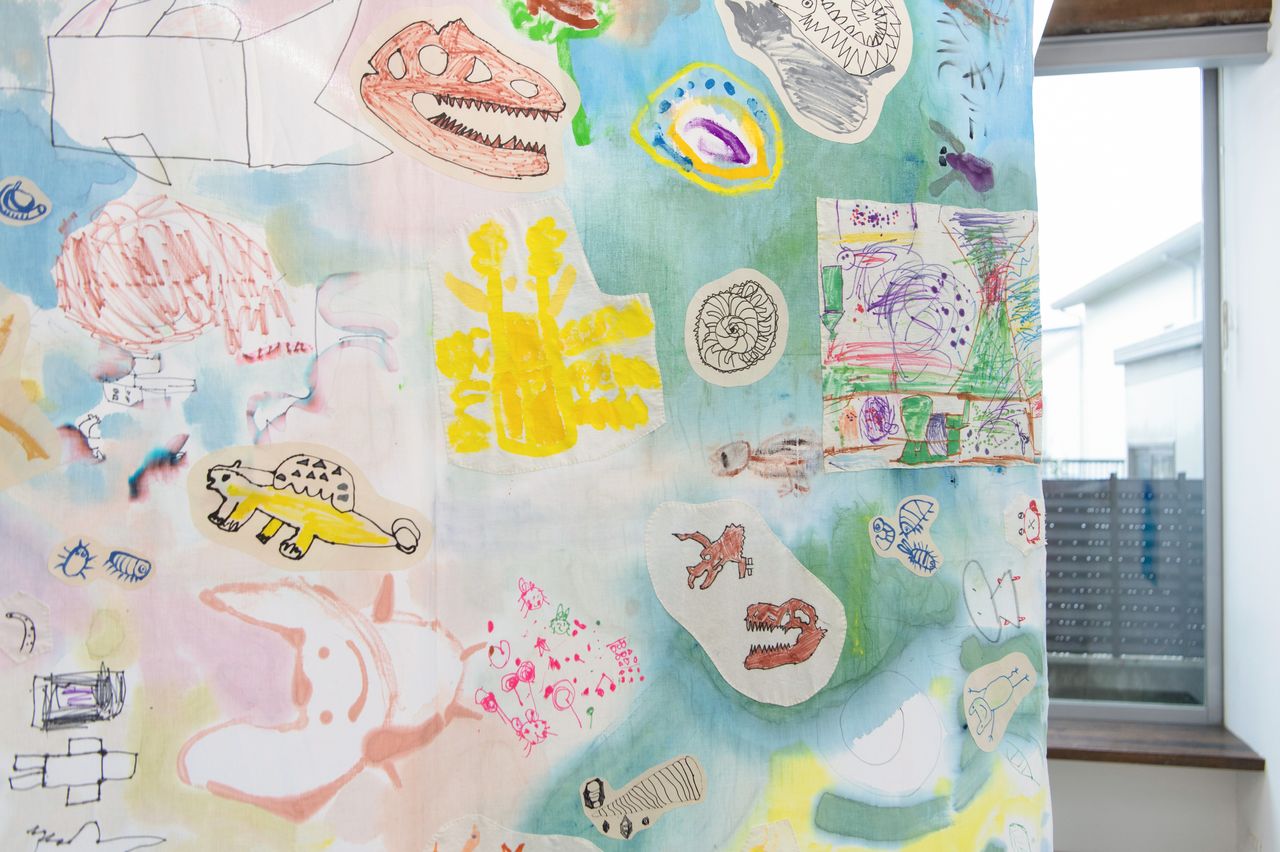
There is a harmony among the unique creatures. (Photo by Kuroiwa Masakazu; © 96Box)
On the second floor, wood sheet paintings by the students are displayed at different angles on the floor and on shelves. These are pictures of tree cuttings ready waiting to be planted. The students were asked to include the sounds the cuttings made when they were planted, and they invented new, almost onomatopoetic words like nyoki-nyoki and goto-goto.
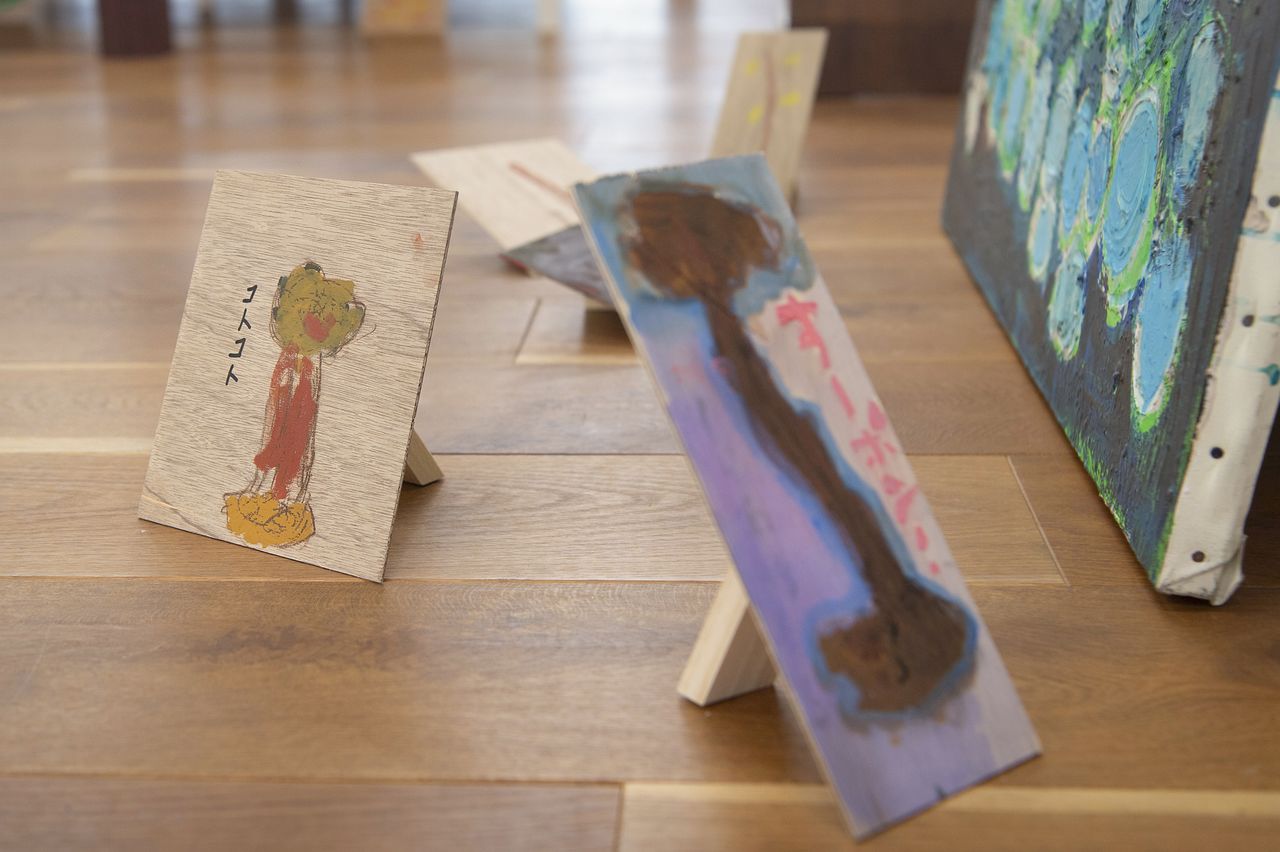
According to their creators, the cuttings all make unusual sounds: koto-koto, suupon, paka, nyoki-nyoki, and so on. (Photo by Kuroiwa Masakazu; © 96Box)
Tree Heart is conspicuously displayed at the back of the area. A special display platform was used to highlight the creative energy of the work.
The children were thrilled to find their own clay creations. Some of them spontaneously picked up their works, and the entire piece was slowly transformed. Okuyama was not annoyed, instead she cheerily told the students that today was their last chance to move their creations, and asked them to raise their hands if they wanted to.
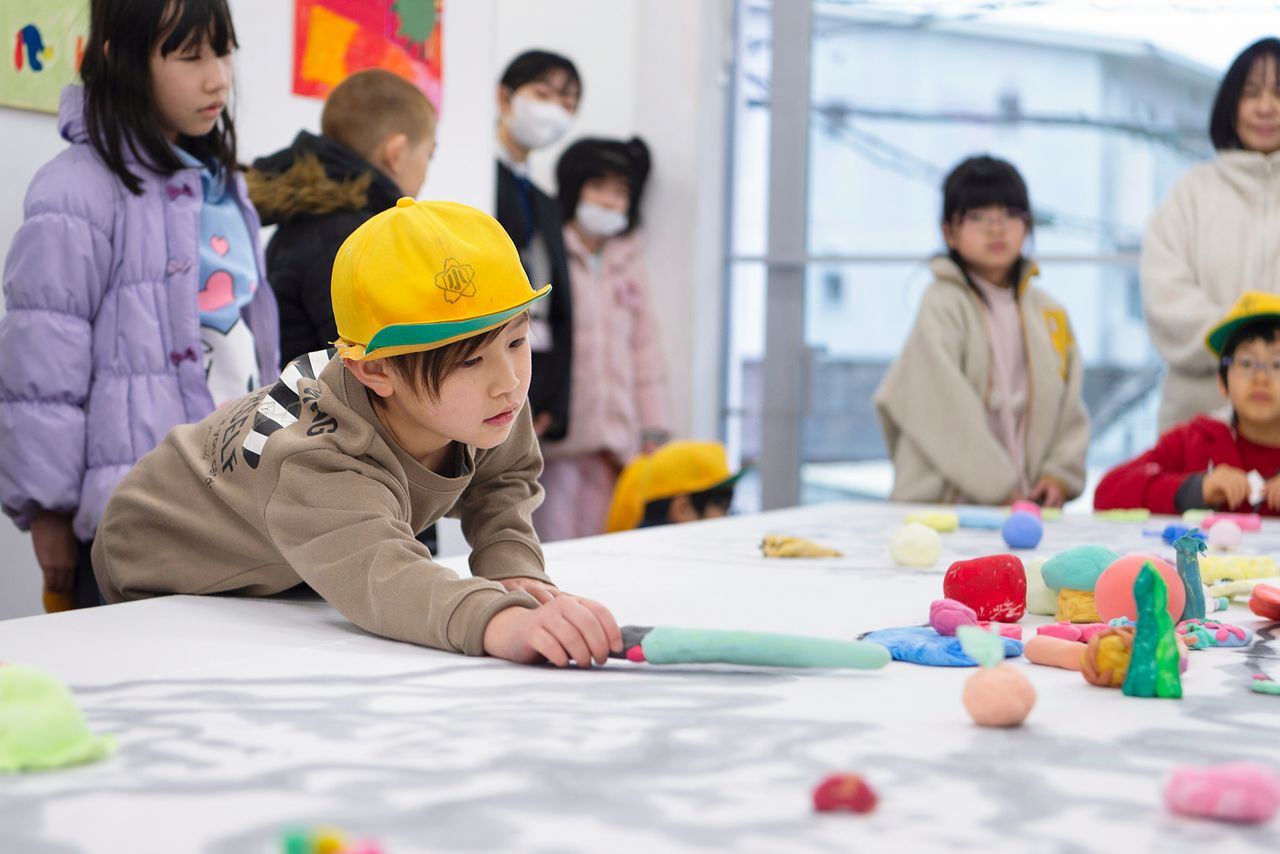
It was charming to see the children reposition their clay pieces on Tree Heart. After all, this is the artist’s prerogative. (Photo by Kuroiwa Masakazu; © 96Box)
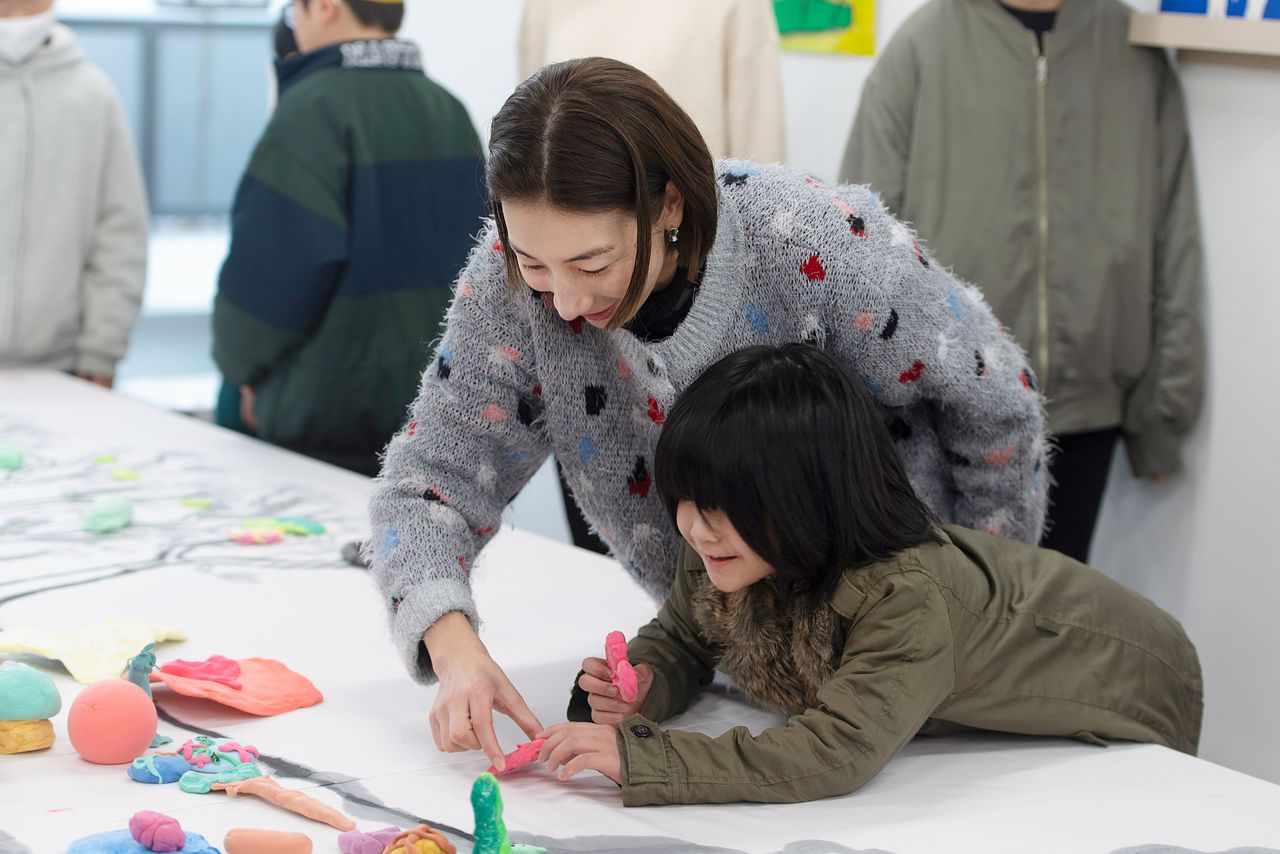
In Okuyama’s words, “The children’s creativity is our nourishment.” (Photo by Kuroiwa Masakazu; © 96Box)
Harmony with the Museum’s Own Collection
Yamamoto decided to name the exhibition, which ran through March 10, 2024, “Earth’s Lost Property.” She explains that during the classes, she felt that “In the children’s innocent vision, everything must appear like the earth’s lost property: trees, underground creatures, even you and I.”
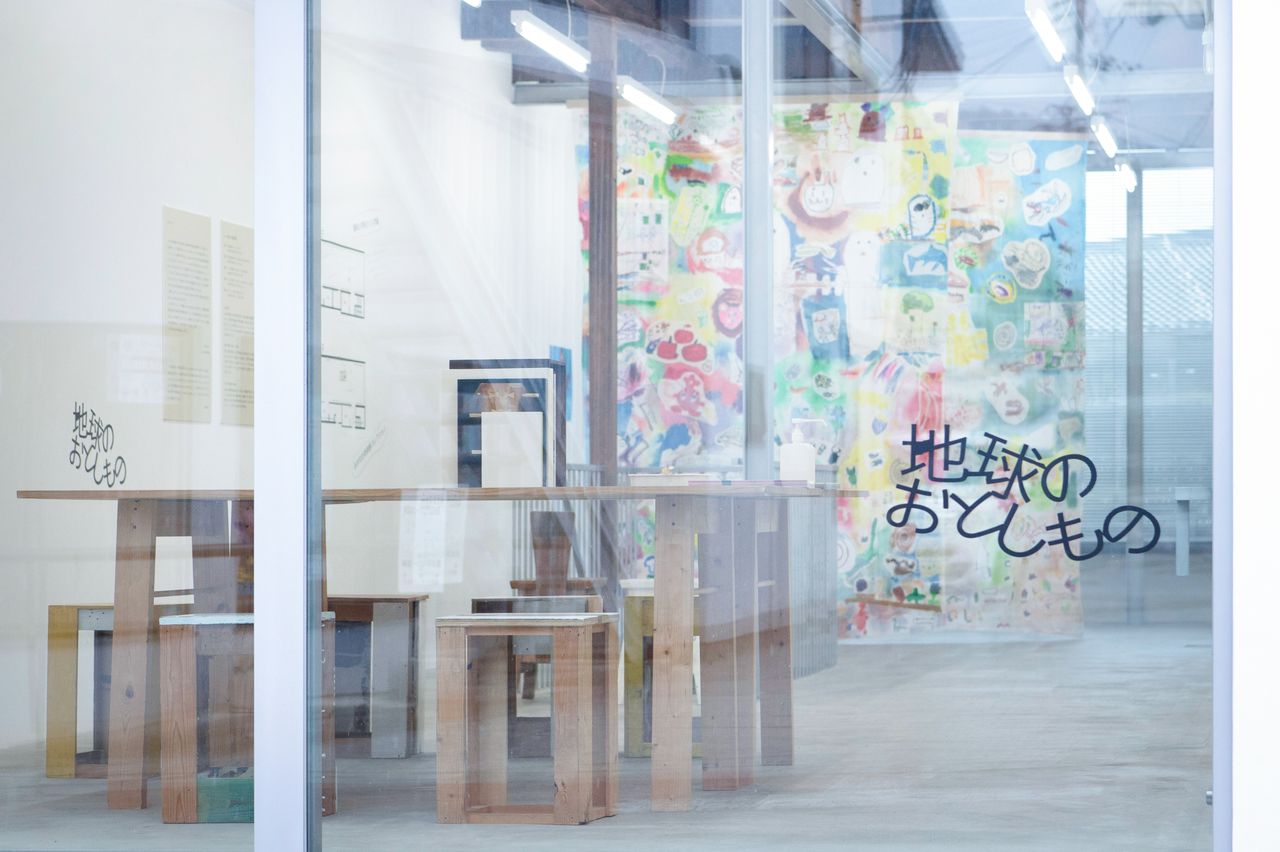
Passersby can get a peek at the exhibition through the museum’s huge windows. (Photo by Kuroiwa Masakazu; © 96Box)
The children’s artworks are undoubtedly eye-catching, but the pictures displayed on the walls are also unmissable. For this exhibition, Yamamoto chose art she felt resonated with the works by the Sakura-gakkyū students from among the 20,000 pieces in the Mizunoki Museum of Art’s collection. The children who noticed the other artworks were very excited, and some even wanted to try something similar themselves.
The museum’s collection consists of pieces by people with intellectual disabilities who attend art classes at local welfare facility, Mizunoki. The pieces are all deeply moving: incredibly intricate patterns, a series of circles painted in vibrant colors, on and on.
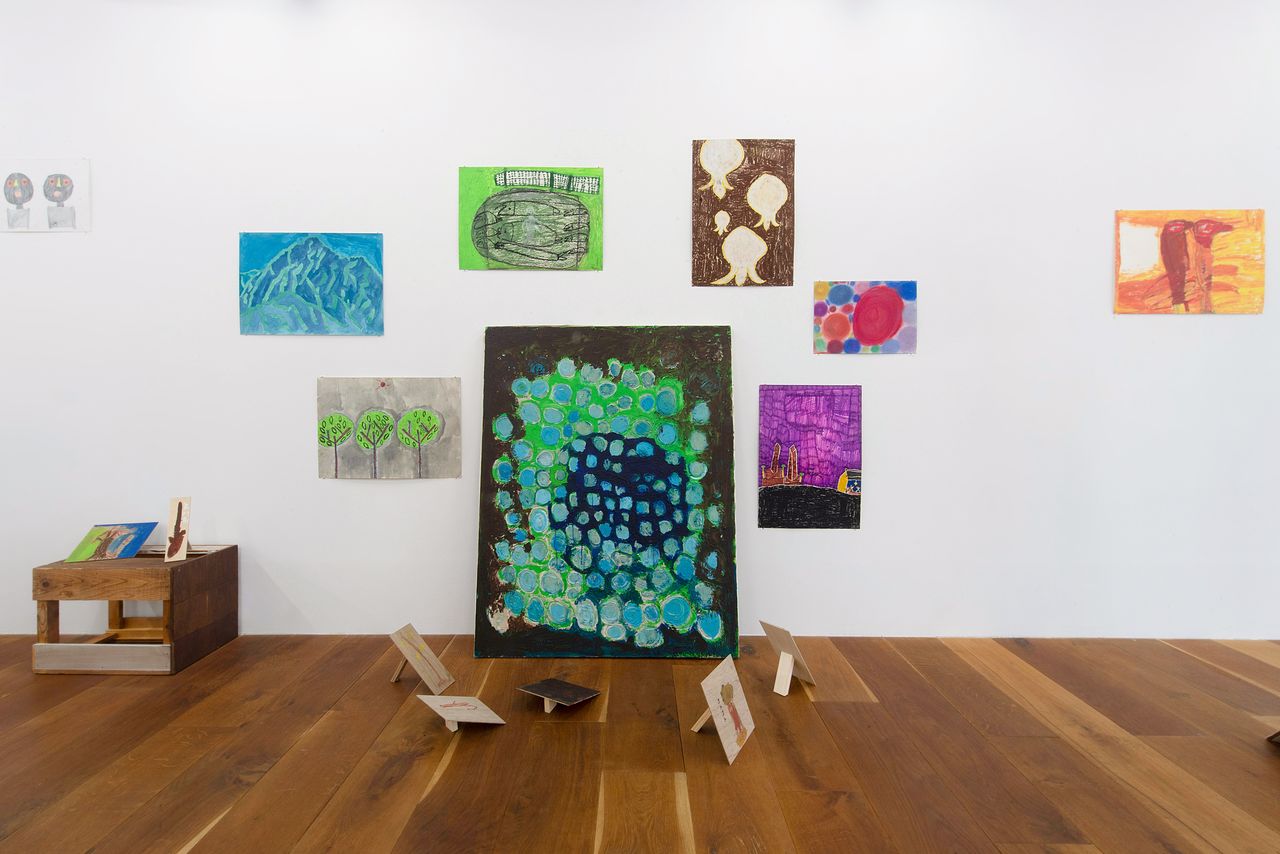
Pieces from the museum’s collection hang next to the Sakura-gakkyū students’ works, producing a “dialog.” (Photo by Kuroiwa Masakazu; © 96Box)
Mizunoki’s Art Garners Praise in Japan and Abroad
The Mizunoki welfare facility and Mizunoki Museum of Art are both operated by the Shōkaen Social Welfare Corporation. Art classes began in 1964, with the Japanese painter Nishigaki Chūichi invited as guest teacher. Nishigaki believed that the merits of art were unrelated to disability. He taught art to the students passionately until his death in 2000.
In the 1980s, works from the classes were awarded in numerous Japanese public art exhibitions. Then, in 1994, 32 works by six artists were selected to become part of the permanent collection of the Art Brut Collection in Lausanne, Switzerland. This was the first time that art from Asia was accepted. Thanks to the recognition gained in Japan and abroad, the Mizunoki Museum of Art was opened in 2012 to hold and exhibit the artwork produced in the Mizunoki art classes.
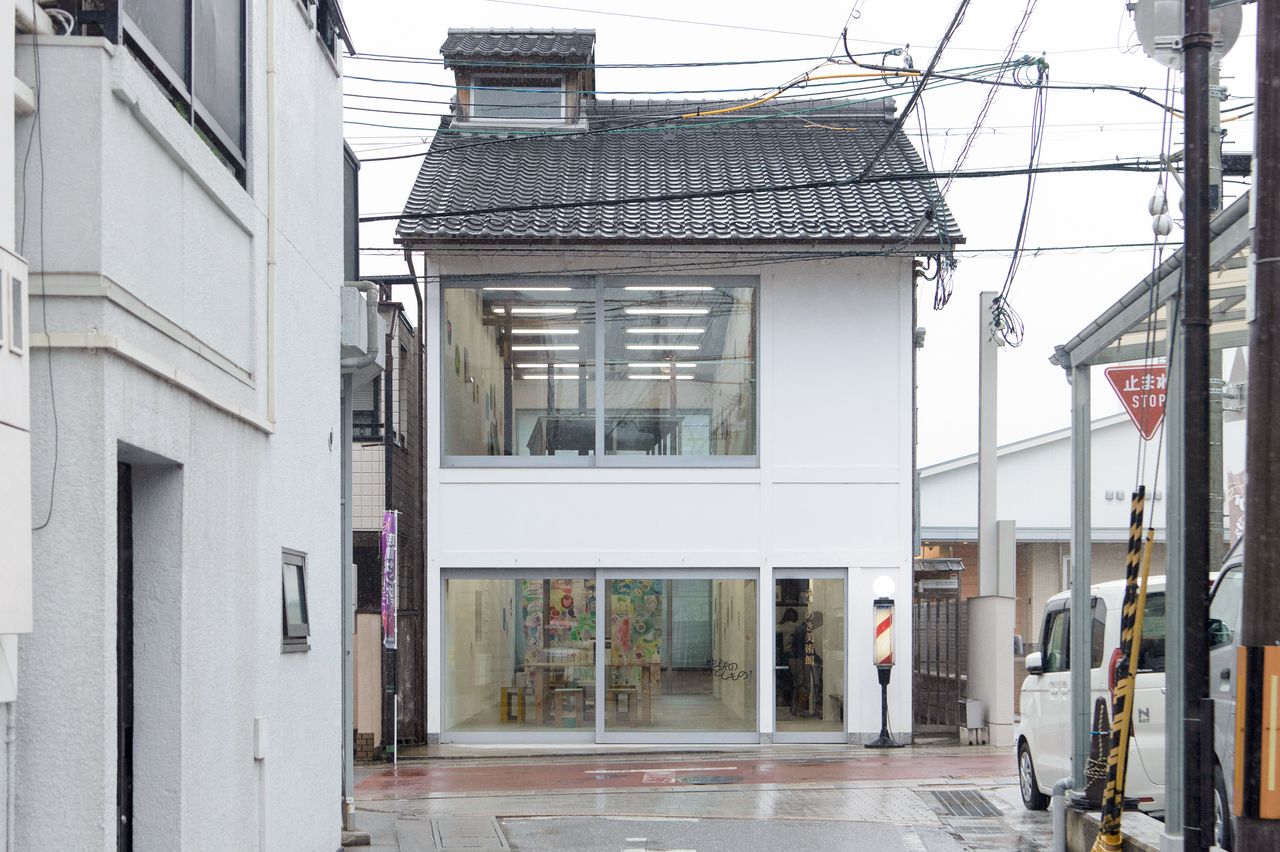
The Mizunoki Museum of Art is in 100-year old building that was once a barbershop and home in Kyoto. (Photo by Kuroiwa Masakazu; © 96Box)
The Mizunoki Museum of Art is often described as an art brut gallery, but Okuyama believes the Mizunoki collection cannot be interpreted simply in the same light as Europe’s “raw art” movement. This is because of the different history and background of Japan and other countries, as well as the different approaches to art and welfare. She explains that the museum prefers to not categorize the art as art brut or art by people with disabilities in order to transcend genres and collaborate with other people, even beyond borders, to share the appeal of the artwork and the museum’s initiatives.
In my encounter with the special needs class students and Yamamoto to report on the museum’s collection and this collaboration, I was impressed by how Okuyama herself is striving to transcend existing frameworks through a world of art with no “correct” answers. Seeing the children deeply absorbed in making art and Okuyama’s loving appreciation of their creations made me hope that, someday, such artwork will simply be acknowledged as “art” regardless of its creators’ community.
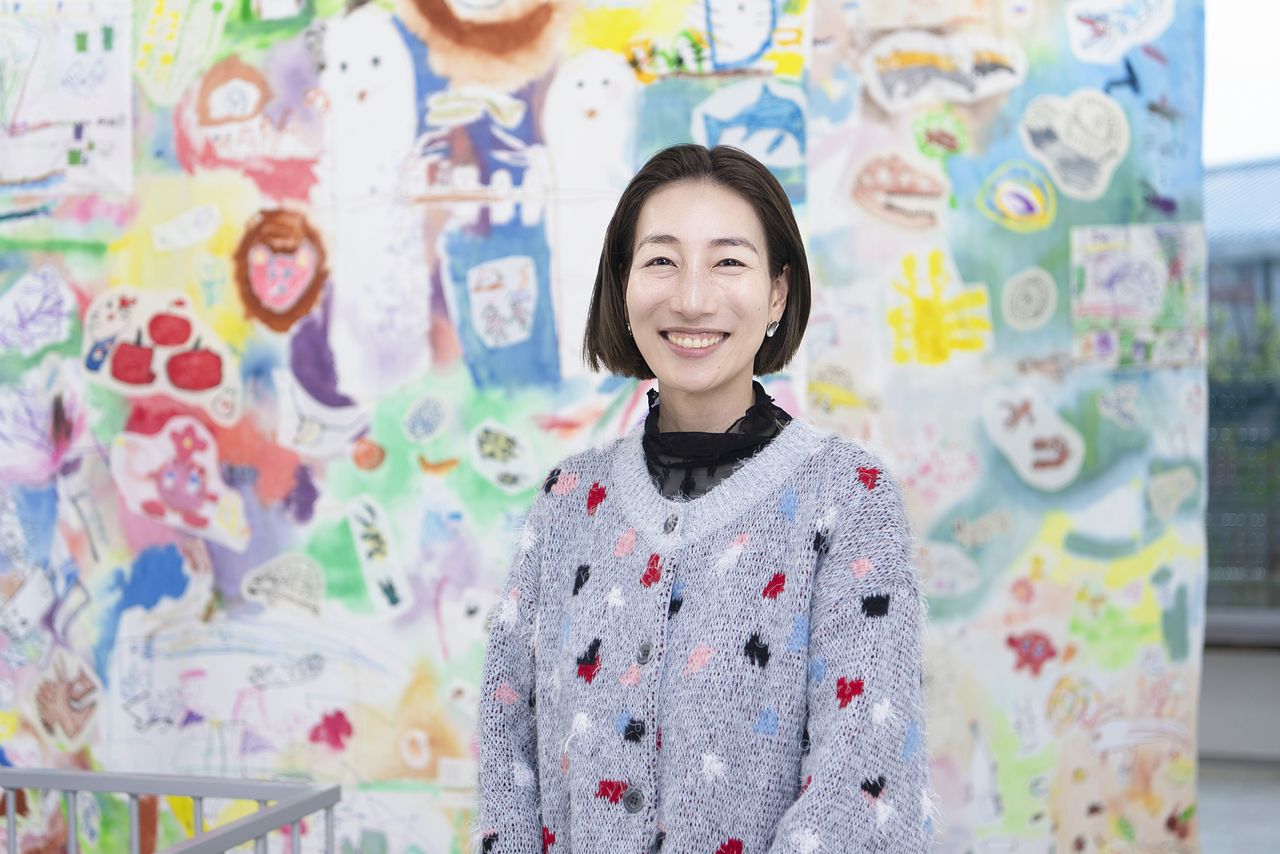
Okuyama is positive about the future of the Mizunoki Museum of Art. (Photo by Kuroiwa Masakazu; © 96Box)
Mizunoki Museum of Art
- Official Website http://www.mizunoki-museum.org/english/
(Originally published in Japanese. Banner photo: Artwork from the Mizunoki Museum of Art collection and art by the Sakura-gakkyū students. Photo by Kuroiwa Masakazu; © 96Box.)
